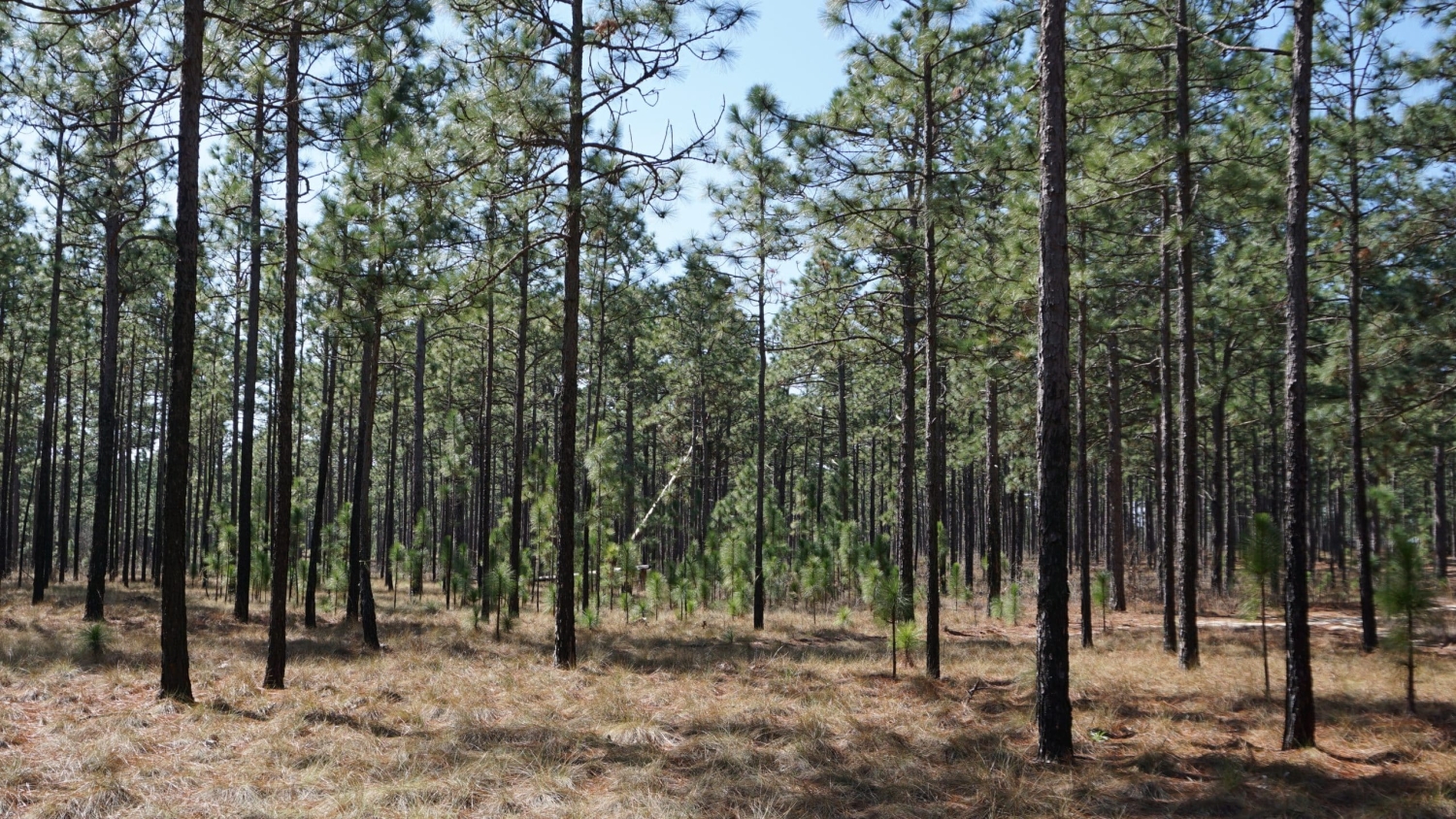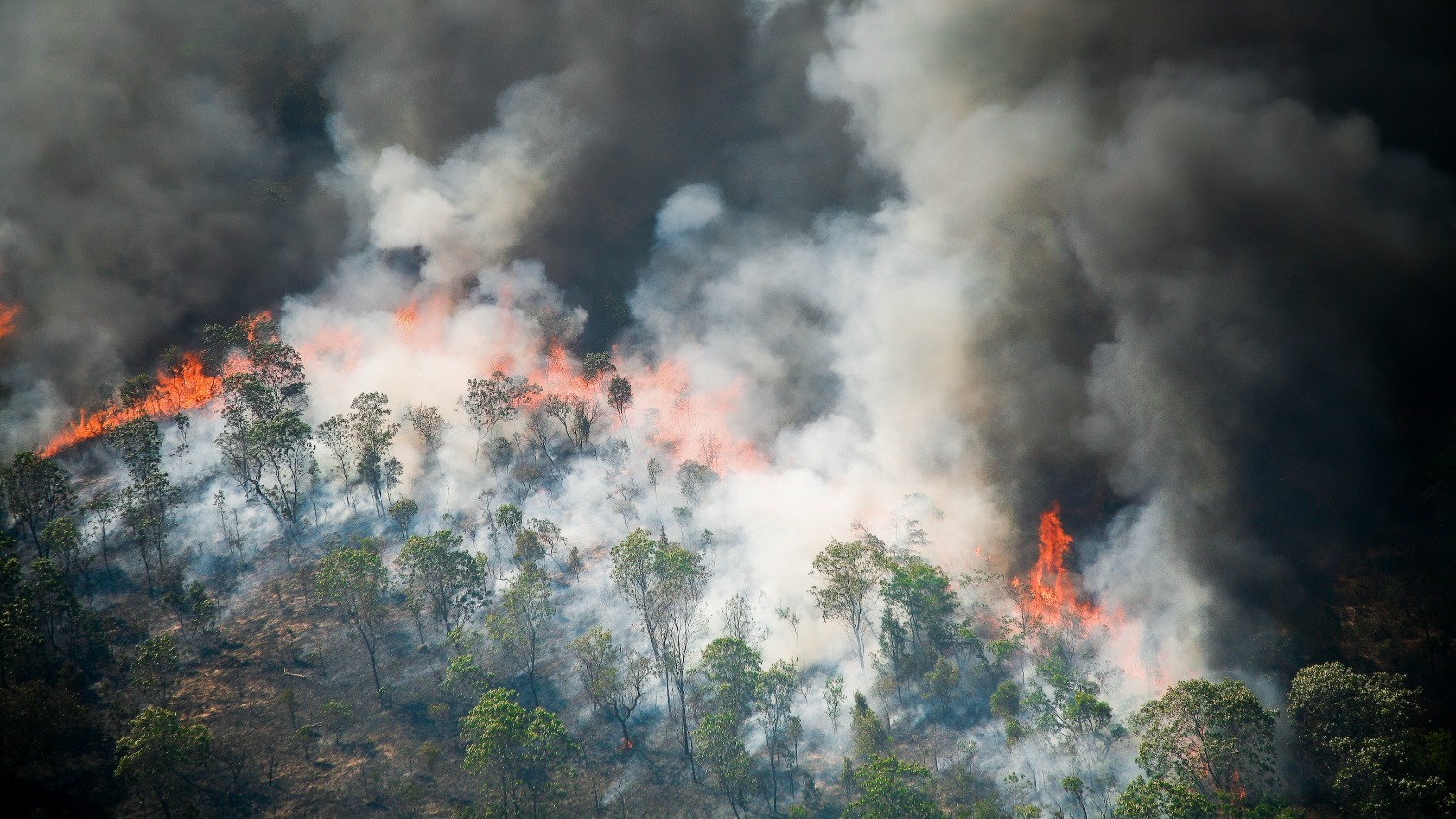The Way Land Is Protected in NC Will Impact Wildlife Habitat Connectivity, Study Shows

The way conservation organizations acquire land over the next 80 years could determine which wildlife species will thrive, according to a recent study from North Carolina State University.
Researchers projected the impact of four different land acquisition strategies in central North Carolina, finding that buying land near existing conservation areas had the best outcomes for wildlife that have specific habitat needs – in this case, those that require longleaf pine habitat to survive. Meanwhile, they saw that buying the cheapest land available provided the smallest boost to landscape connectivity for wildlife.
Their findings could help nonprofits make better decisions, depending on what their conservation goals are. The Abstract spoke to the study’s authors – Robert Scheller, professor and associate dean in NC State’s College of Natural Resources, and Tina Mozelewski, a former NC State graduate student – about landscape connectivity, why it’s important for wildlife, and how the study could help nonprofits interested in wildlife conservation.
The Abstract: Your study looked at the impact of conservation on landscape connectivity. What does that mean, and why did you look at that?
Robert Scheller: Wildlife need to be able to move around to find food, mates and places to rear their young, and some animals disperse farther than others. So you have long distance and short distance dispersers. Birds can fly, and so they are typically more long-distance dispersers compared with a fox or a squirrel, which have to move along the ground. Then you also have habitat specialists – which have narrow habitat needs – and generalists. We also need to consider that any patch of land is vulnerable to disruption – the local loss of that type of habitat. Connectivity is about making sure that movement among patches is possible so that animals can find food, breeding partners and shelter. We wanted to find out what the best strategy is for investing conservation dollars on the landscape to benefit wildlife based on their ability to move around a landscape, and considering whether they have extremely specialized habitat needs.
TA: What did you find is the best land acquisition strategy?
Tina Mozelewski: We evaluated four different conservation strategies: targeting property close to land that’s already being managed for conservation purposes; targeting the cheapest land; and targeting land with the highest geodiversity characteristics – so land with more diverse soil types or topography. The last strategy was randomly selecting property on the landscape. What we found was targeting land close to existing conservation patches improved connectivity the most for specialist species.
When you looked at the generalist species, the strategy didn’t make a huge difference because they are already able to move pretty freely across the landscape and habitat is more readily available. But you saw a big difference between strategies when you looked at specialist species, and species that had shorter dispersal distances. For them, buying and restoring land clustered around existing protected areas had the best outcome because existing longleaf pine habitat is concentrated in the southeastern part of the study area, largely in protected areas in the Sandhills. If you’re clustering conservation around areas with existing longleaf pine, it means that new habitat is more easily reachable for specialists and short-range dispersers that rely on those forests to survive. It created more accessible habitat for them.
TA: What should conservation groups take away from this?
Mozelewski: There is a real need in conservation to figure out ways to forecast the outcomes of our conservation strategies to inform where we’re investing our dollars. While our approach cannot tell you exactly what conservation action to take or where, it can clue you in to how your strategies are going to perform in the future, so that you are not spending money on conservation unlikely to meet your goals.
For conservation groups in the study area, if you’re concerned about a generalist species, for example, the takeaway is that since all conservation strategies pretty equally facilitated connectivity, you can use subsequent conservation goals as additional filters to make a decision. If you care about specialist species that have a preference for longleaf pine, then targeting your conservation around existing longleaf pine conservation areas is going to give you the best bang for your buck.
This gives nonprofits and other organizations a way to test conservation strategies before they invest resources in on the ground implementation. Everything we’ve done is publicly available online – the model is free and publicly accessibly, so others can use this model if they want.
TA: What are you planning to look at in the future on this topic?
Scheller: The Southeast, generally, is a biodiversity hotspot, and that includes the Piedmont of North Carolina. There is a huge threat of fragmentation of wildlife habitat particularly from land-use change, and also from climate change. In future studies, we’re planning to look at the outcomes of different land conservation strategies amid climate change, and land-use change on connectivity.


